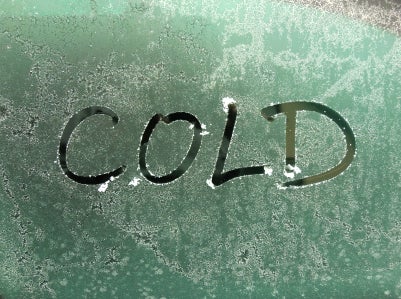Winter Weather Health Safety
As the bitter cold temperatures remain in our area for the next several days, the lingering effects of the winter storm, which swept across the midwest Thursday, pose certain risks to your health. Make sure you are aware of extra precautions to take to keep you and your family safe and healthy.
Think Snow Think Heart
As we mentioned Wednesday on our Facebook page, before you head out to shovel the sidewalk and driveway, you need to also consider your heart. Research has shown a connection between shoveling snow and heart attacks and experts agree that connection is in large part due to the fact those who suffer a heart attack after clearing snow are usually inactive the rest of the year. A sudden and extreme exertion is stressful to the heart, increasing the risk for blood clots to form causing a heart attack. Anyone who has had an artery-opening stent procedure within the last year is advised not to shovel snow at all and ask for help from a family member or neighbor.
If you believe you are healthy and able to shovel snow, pay close attention to how you feel. If at any point you feel short of breath, dizzy or experience any discomfort in your chest, stop. Go inside and take a break. Remember, you do not have to clear all the snow at once. Although it may look like a fairly simple task, shoveling deep snow is the equivalent of running full speed on the treadmill. Take it slow and take breaks.
Without even taking on the task of shoveling the snow, you also need to be careful if you have high blood pressure. Cold temperatures and especially a sudden change in weather causes blood vessels to narrow, further increasing blood pressure. If you have high blood pressure, be sure to take it slow and stay inside as much as possible. When heading outdoors, dress warm and limit exposure to the cold.
Stay Upright
Our temperatures will likely stay below freezing for several days. That means the wintery precipitation will also stay around. Slips and falls are one of the top reasons for Emergency Room visits during and after a winter storm. Remember to take it slow and plan where you are going to walk. Do not take short cuts or rush before all the snow and ice is completely removed. Wear proper footwear – flat rubber soles that will help give you traction in the snow and ice. Take small steps and hold on to handrails, especially when going up or down stairs. Don’t overload yourself carrying heavy items that make it harder to balance.
Stay Warm Safely
With this dramatic change in temperatures, you may be susceptible to “cold stress”, especially if you work outside, exposed to below freezing temperatures for a period of time. Take extra precautions and be aware of the symptoms to protect against hypothermia, an abnormally low body temperature.
Early Symptoms
Shivering
Fatigue
Loss of coordination
Confusion and disorientation
Late Symptoms
No shivering
Blue skin
Dilated pupils
Slowed pulse and breathing
Loss of consciousness
When indoors, it is natural to seek more heat sources with subfreezing temperatures outside. Before you plug in the space heater, however, the U.S. Consumer Products Safety Commission offers these tips to help keep you and your family safe:
*Do not used if damaged or recalled. Check www.cpsc.gov or www.saferproducts.gov for recalled products.
*Do you use while you are sleeping or not at home.
*Make sure plug fits securely in outlet.
*Check regularly to make sure the plug, faceplate and wall outlet are not hot. If they are hot to the touch, discontinue use.
*Do not use a power strip or extension cord.
*Place on a secure surface where it will not easily be knocked over.
*Purchase only safety-certified space heaters.
*Do not run the cord under a rug or other objects.
*Keep electric heaters away from water and do not touch if you are wet.




